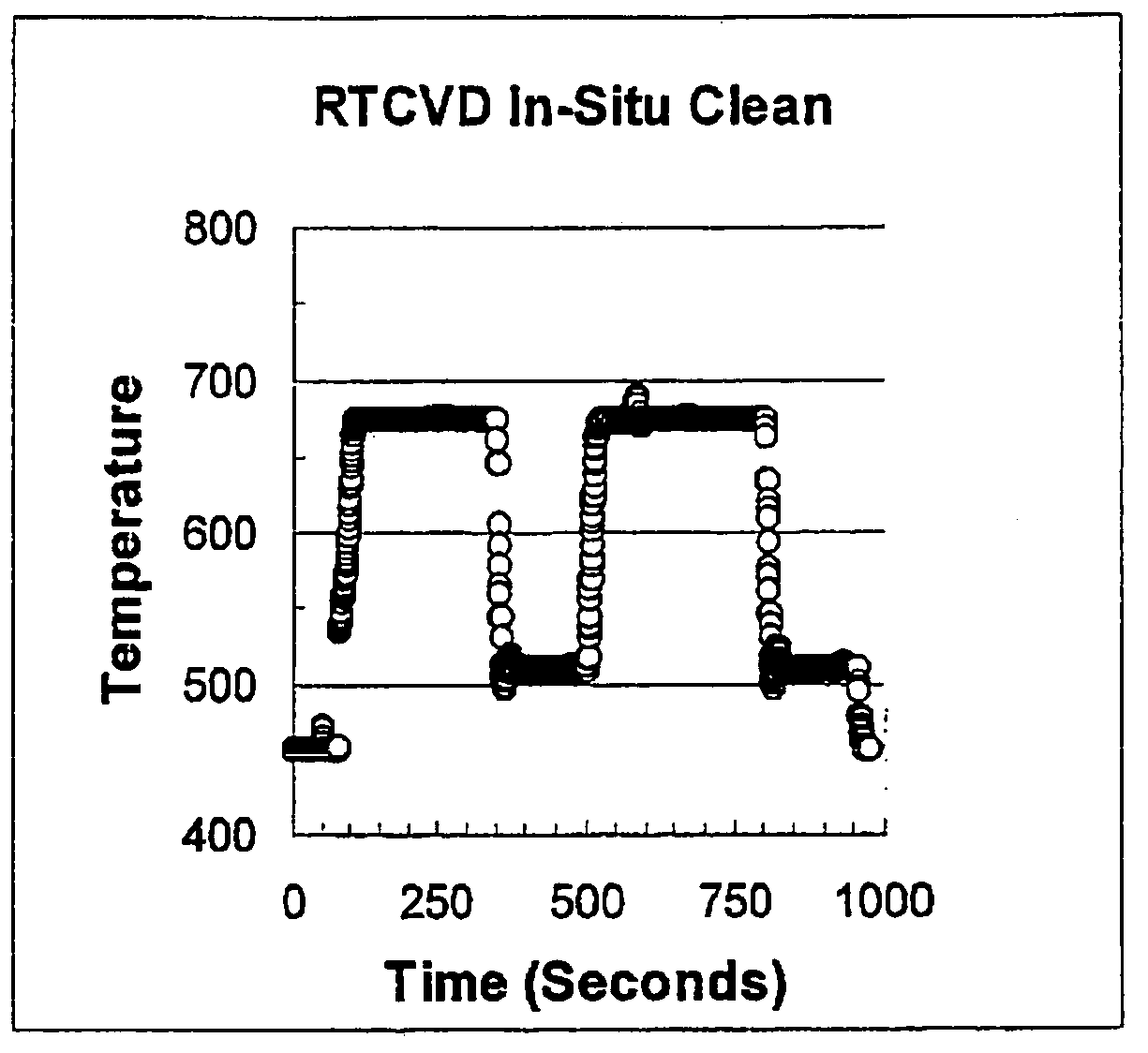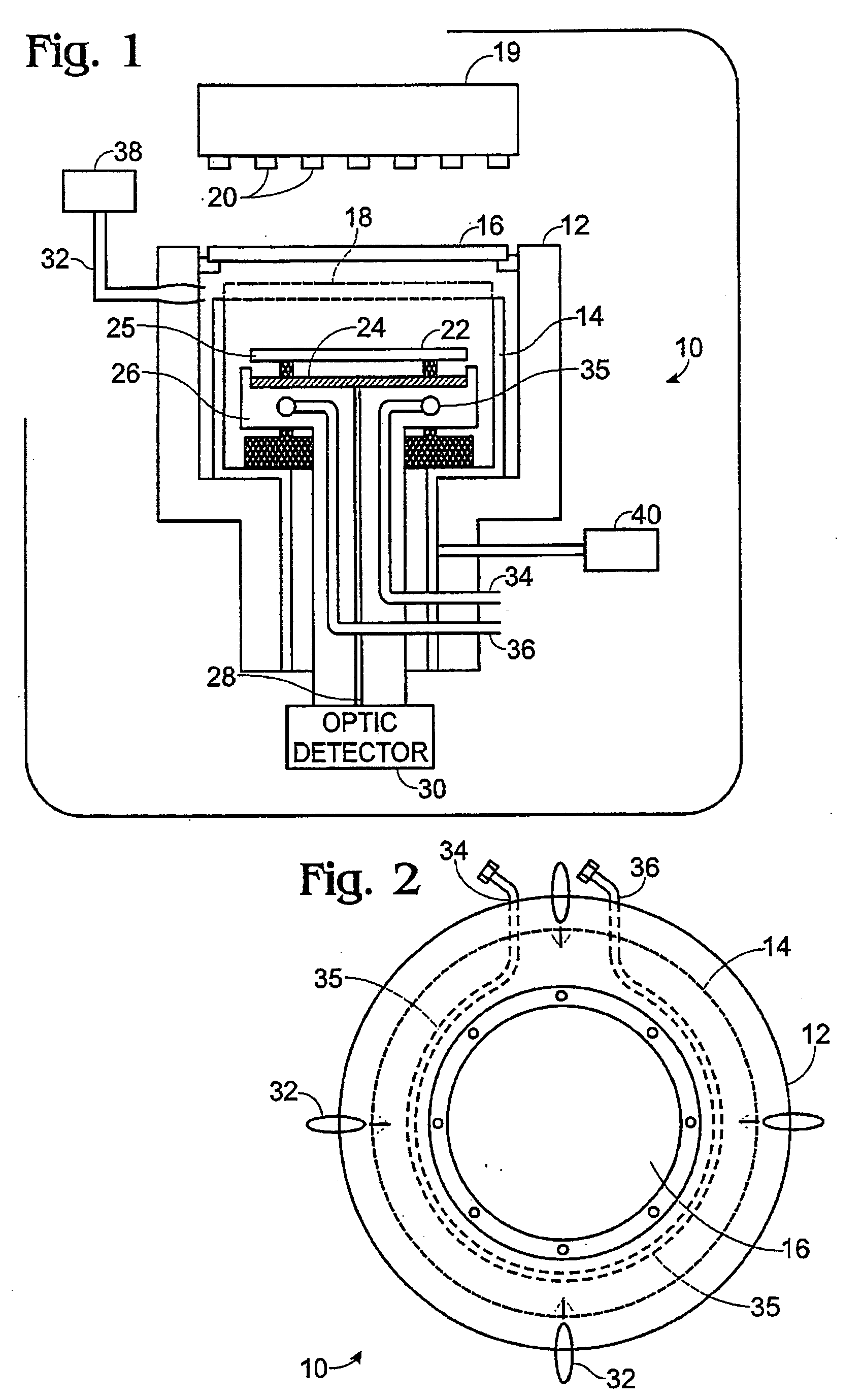Method of processing selected surfaces in a semiconductor process chamber based on a temperature differential between surfaces
a technology of semiconductor process chamber and temperature differential, which is applied in the direction of cleaning using liquids, instruments, optical radiation measurement, etc., can solve the problems of rtp system certain disadvantages that have not been adequately addressed, defective devices being formed on the wafer, and prolonged heating and cooling of the wafer
- Summary
- Abstract
- Description
- Claims
- Application Information
AI Technical Summary
Benefits of technology
Problems solved by technology
Method used
Image
Examples
Embodiment Construction
[0036] In this invention, a process chamber is a vessel where processes are being performed to fabricate discrete devices or circuits on a work object. The process chamber may be used to oxidize, etch, dope, deposit, implant or pattern materials in or on the work object, as well as to clean, prepare and condition the work object, among other things. The present invention is preferably used to process work objects in an RTP process chamber for chemical deposition, where the work object is heated to a higher temperature than surrounding walls in the chamber.
[0037]“Work object” means objects, including, wafers (including production, dummy, or pmon), die and packaged parts, incorporating, in whole or part, silicon substrates, and other known or discovered semiconductor materials, components, and assemblies, including, for example, silicon-on-insulator (SOI), silicon-on-sapphire (SOS), thin film transistor (TFT) materials, or germanium, periodic group III-IV materials, II-VI materials, ...
PUM
| Property | Measurement | Unit |
|---|---|---|
| temperature | aaaaa | aaaaa |
| temperature | aaaaa | aaaaa |
| temperature | aaaaa | aaaaa |
Abstract
Description
Claims
Application Information
 Login to View More
Login to View More - R&D
- Intellectual Property
- Life Sciences
- Materials
- Tech Scout
- Unparalleled Data Quality
- Higher Quality Content
- 60% Fewer Hallucinations
Browse by: Latest US Patents, China's latest patents, Technical Efficacy Thesaurus, Application Domain, Technology Topic, Popular Technical Reports.
© 2025 PatSnap. All rights reserved.Legal|Privacy policy|Modern Slavery Act Transparency Statement|Sitemap|About US| Contact US: help@patsnap.com



